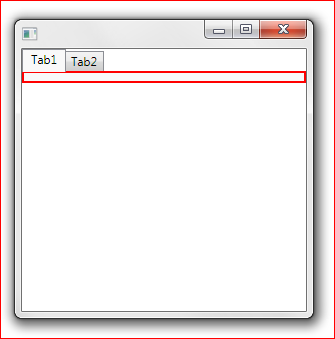我正在尝试使 TabControl 根据其外部空间自动调整大小(它在 StackPanel 中):
<Window x:Class="Window1"
xmlns="http://schemas.microsoft.com/winfx/2006/xaml/presentation"
xmlns:x="http://schemas.microsoft.com/winfx/2006/xaml" Height="100">
<Grid>
<StackPanel>
<TabControl
BorderBrush="Red"
BorderThickness="2"
VerticalAlignment="Stretch"
VerticalContentAlignment="Stretch">
<TabItem Header="Tab1"/>
<TabItem Header="Tab2"/>
</TabControl>
</StackPanel>
</Grid>
</Window>
上面的代码片段产生了以下窗口,而我希望红色边框到达窗口的底部:
